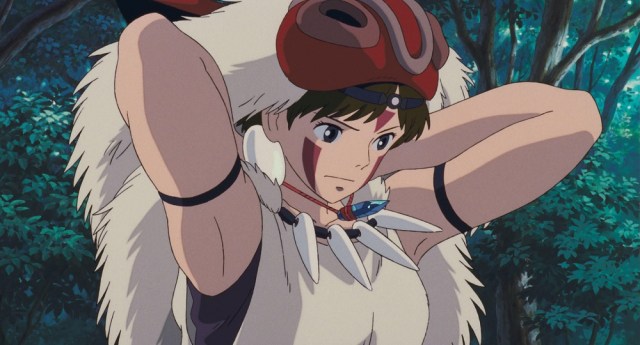
Ghibli let fans ask anything they wanted and pulled back the curtain on the 1997 Hayao Miyazaki anime classic, which almost wasn’t titled Princess Mononoke.
This month’s Friday the 13th was doubly lucky for anime enthusiasts. Not only was Princess Mononoke shown on TV in Japan, the official Studio Ghibli Twitter account dropped a steady supply of behind-the-scenes details during the broadcast.
Ghibli’s tweets came in the form of responses to questions collected from Twitter users prior to Princess Mononoke’s airing, and as one of director Hayao Miyazaki’s most complex and respected works, there was plenty that admirers wanted to know. Let’s take a look at what the studio revealed, starting with the answer to the question “What was the hardest scene to animate?”
“It’s hard to pick just one as the most difficult, but for the scene right at the start of the movie where the Tatarigami attacks the village, aside from a few CG parts, all of it is hand-drawn. Drawing the snake-like tentacles on the creature’s body, which are on-screen for two minutes and 10 seconds, took one year and seven months.”
That’s not to say the CG portions were a breeze either. Princess Mononoke was the first Ghibli movie with any significant use of computer-generated visuals, and the studio added:
“From the desks of the CG staff in the studio, there’s a house you can see outside the window. The staff saw the house get torn down, rebuilt, and the family move back in, all while they were still working on the CG for the sequence where the Tatarigami’s eye gets pierced by an arrow.”
Princess Mononoke doesn’t just look amazing in motion, though. It also boasts some of the most memorable character designs of any animated motion picture. One question asked if there was any special meaning behind the red “makeup” that female lead San always has on her cheeks and forehead. While explaining that there’s no special symbolism to them, Ghibli did explain that the markings aren’t makeup at all, but actually tattoos.
Several commenters expressed their fondness for male lead Ashitaka, with one simply asking “Why is Ashitaka so cool?” A definitive answer for such a subjective question is obviously hard to pin down, but apparently even before the movie was released the master himself knew he was onto something, as Ghibli’s answer was “[About Ashitaka], during production Miyazaki said ‘I’m drawing a once-in-a-generation beauty.” Miyazaki’s personal sensibilities also played a role in naming the characters, with Lady Eboshi, Iron Town resident Kohroku, and boar god Okkoto all named after places in Nagano Prefecture near a mountain hut that Miyazaki owns.
Speaking of Lady Eboshi, Ghibli gave a deeper insight into what the character was doing doing before she became the leader of Iron Town. “In interviews and symposiums from the time when the movie was in theaters, Miyazaki has said that Eboshi was sold as a slave and became the wife of the leader of a band of Japanese pirates. After she became a skilled fighter, she killed him, stole his treasure, and returned to mainland Japan.” “I like Lady Eboshi.” Miyazaki said at the time. “She’s exactly like a modern person. She knows exactly what she has to do to achieve her goals, and has no qualms about taking those actions. At the same time, she has a continual purity. She’s a person who’s able to take action while holding on to her ideals.”
Moving on to the movie’s non-human characters, Ghibli confirmed that while Ashitaka’s steed Yakul might look like a deer or elk, it’s actually a fictional sub-specious of antelope that, within the world of Princess Mononoke, is called an akashishi. Likewise, the surreally serene Great Forest Spirit is obviously imaginary, but the inspiration for its design came from the deer at the real-world Nara Park, which the members of Studio Ghibli visited during a company trip in 1994, three years prior to the movie’s release.
▼ By the way, if you ever wondered how Ghibli produced the unforgettable rattle of the Kodama forest spirits, they used these wooden castanets, with the logic that spirits of the forest should have a wood-based sound.
https://twitter.com/JP_GHIBLI/status/1426159109217292298▼ And in another sound engineering tidbit, when asked which scene’s sound effects presented a challenge, producer Toshio Suzuki said he’s particularly proud of the duel between San and Eboshi, since they made sure that Eboshi’s metallic sword sounded different than San’s bone-based dagger.
When released internationally, Princess Mononoke boldly left half of its title untranslated from the original Japanese version (Mononokehime), but the movie almost had a completely different title, even in Japan. Miyazaki’s original concept for the film, which he first came up with back in 1980, was a sort of feudal-Japan version of Beauty and the Beast, centered on a large, cat-like monster and human girl (the “Monster Princess”/”Mononokehime”). In time, the vision for the film changed to what Princess Mononoke eventually became, and Miyazaki himself wanted to change the title to “Ashitaka Sekki,” or “The Legend of Ashitaka.” So why didn’t Miyazaki, whose dedication to his artistic preferences is legendary, get his way? Because veteran Ghibli producer Toshio Suzuki leaked the Mononokehime working title to weekly Japanese TV movie program Kinyo Road Show, after which the studio decided to just roll with it.
Princess Mononoke’s stature is so great that even its advertising tagline, “Ikiro,” meaning “Live” or “survive,” echoes throughout Japanese cinematic history. However, this too was a revision from the original, with the initial idea being “Do you feel fear? Or love?” (“Osoroshii ka? Itoshii ka?”).
Jumping from production and pre-release marketing all the way up to the movie’s ending, one fan was curious about why Ashitaka’s body still shows signs of the bruising/scarring from his curse the final time we see him. Hasn’t the Great Forest Spirit cured him of his affliction at that point? The answer:
“The reason you can still faintly see his bruises is because the curse hasn’t completely disappeared. Talking about the film, Miyazaki said ‘Young people today won’t accept a happy ending. I think having the bruising not completely disappear, showing that the curse is something that could return at any time, but that Ashitaka still goes on living, feels truer.”
That might feel like a bit of a downer, but there’s also a bit of cute joy that might be hiding in plain sight at the end of Princess Mononoke. “I heard a rumor that the very last Kodama that appears in the ending grows up to become Totoro, but is that true?”, to which Ghibli replies:
▼ “During production, it seems that Miyazaki said something along those lines to the staff…”
It’s not a definite “Yes,” but since Princess Mononoke has never been a story about absolutes, and instead one about the importance of finding good things in a sometimes ugly world, the simple hope that maybe something cute and cuddly can exist after the desperate struggles San, Ashitaka, and Eboshi go through is its own kind of uplifting.
Source: Twitter/@JP_GHIBLI
Top image: Studio Ghibli
Insert images: Studio Ghibli (1, 2)
● Want to hear about SoraNews24’s latest articles as soon as they’re published? Follow us on Facebook and Twitter!
Follow Casey on Twitter, where he’s always happy to talk about anime from the late ’90s.

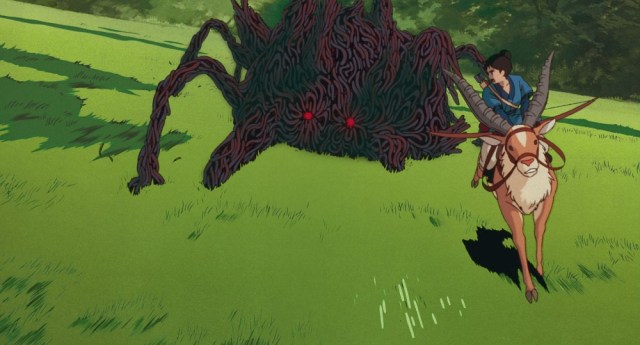
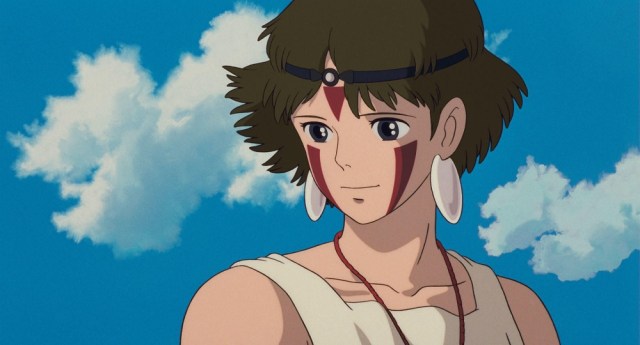
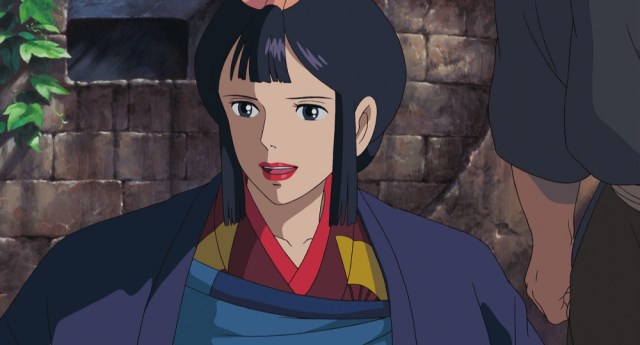
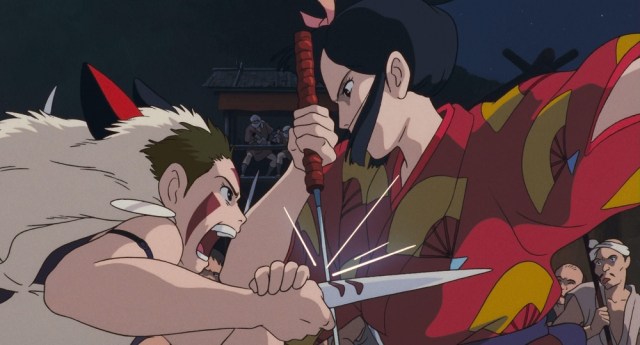
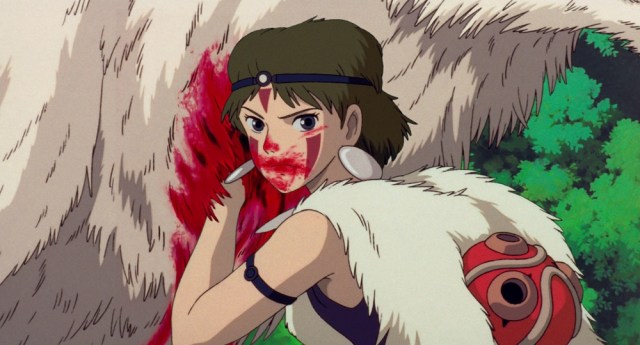
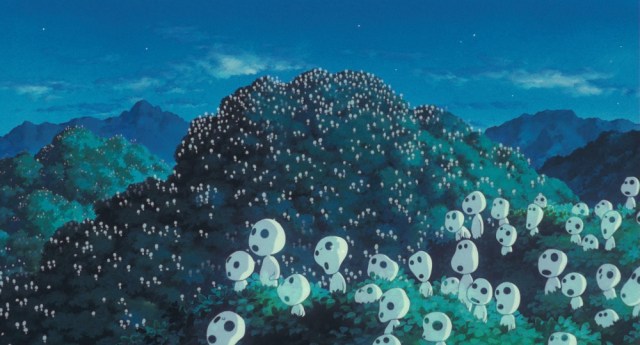
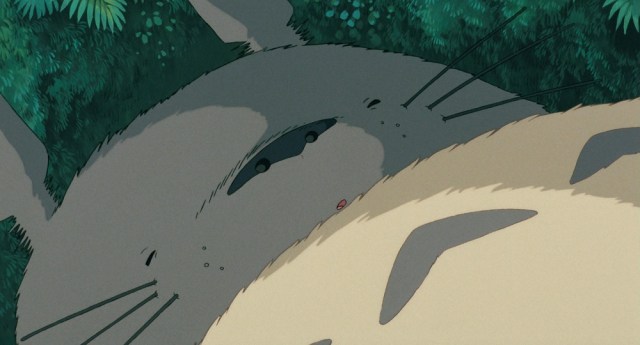
 Now’s your chance to ask Studio Ghibli ANYTHING you want about Princess Mononoke
Now’s your chance to ask Studio Ghibli ANYTHING you want about Princess Mononoke Princess Mononoke 25th anniversary lineup includes cute plushies, fierce magnets, expensive bowls
Princess Mononoke 25th anniversary lineup includes cute plushies, fierce magnets, expensive bowls Hayao Miyazaki is getting worried about how his new anime is being marketed, Ghibli producer says
Hayao Miyazaki is getting worried about how his new anime is being marketed, Ghibli producer says New Princess Mononoke accessory line has Kodama for your ears, wolves for your fingers【Photos】
New Princess Mononoke accessory line has Kodama for your ears, wolves for your fingers【Photos】 The little-known inspiration for Princess Mononoke: A manga about a tribe in Papua New Guinea
The little-known inspiration for Princess Mononoke: A manga about a tribe in Papua New Guinea How to order snacks on a Shinkansen bullet train in Japan
How to order snacks on a Shinkansen bullet train in Japan New Nintendo Lego kit is a beautiful piece of moving pixel art of Mario and Yoshi【Photos】
New Nintendo Lego kit is a beautiful piece of moving pixel art of Mario and Yoshi【Photos】 Demon Slayer: Kimetsu no Yaiba gets new roller coaster attractions and food at Universal Studios Japan
Demon Slayer: Kimetsu no Yaiba gets new roller coaster attractions and food at Universal Studios Japan Japan’s new difficult-to-drink-from beer glass protects your liver, but it’s a brutal experience
Japan’s new difficult-to-drink-from beer glass protects your liver, but it’s a brutal experience Burger King Japan suddenly adds Dr. Pepper and Dr. Pepper floats to its menu nationwide
Burger King Japan suddenly adds Dr. Pepper and Dr. Pepper floats to its menu nationwide High-fashion Totoro cuddle purse is like an elegant stroll in the forest【Photos】
High-fashion Totoro cuddle purse is like an elegant stroll in the forest【Photos】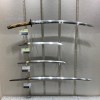 Genuine Muramasa blade and Muromachi katana on display at Tokyo’s Touken Ranbu store【Photos】
Genuine Muramasa blade and Muromachi katana on display at Tokyo’s Touken Ranbu store【Photos】 Hello, cosmetics! Clinique teams up with Hello Kitty this summer for first-time collaboration
Hello, cosmetics! Clinique teams up with Hello Kitty this summer for first-time collaboration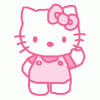 Hello Kitty isn’t a cat!? We called Sanrio to find out!
Hello Kitty isn’t a cat!? We called Sanrio to find out! 10 crazy pizzas from Japan
10 crazy pizzas from Japan Nintendo history you can feel – Super NES, N64, and GameCube controllers become capsule toys
Nintendo history you can feel – Super NES, N64, and GameCube controllers become capsule toys “The most Delicious Cup Noodle in history” – Japan’s French Cup Noodle wins our heart【Taste test】
“The most Delicious Cup Noodle in history” – Japan’s French Cup Noodle wins our heart【Taste test】 Starbucks releases a cute Frappuccino and Unicorn Cake…but not in Japan
Starbucks releases a cute Frappuccino and Unicorn Cake…but not in Japan Kyoto Tower mascot termination reveals dark side behind cute Japanese characters
Kyoto Tower mascot termination reveals dark side behind cute Japanese characters McDonald’s Japan’s Soft Twist Tower: A phantom ice cream only sold at select branches
McDonald’s Japan’s Soft Twist Tower: A phantom ice cream only sold at select branches Yabai Ramen: What makes this Japanese ramen so dangerous?
Yabai Ramen: What makes this Japanese ramen so dangerous? Finally! Nintendo Japan expands Switch 8-bit controller sales to everybody, Online member or not
Finally! Nintendo Japan expands Switch 8-bit controller sales to everybody, Online member or not Japanese government wants to build luxury resorts in all national parks for foreign tourists
Japanese government wants to build luxury resorts in all national parks for foreign tourists To combat declining birth rate, Japan to begin offering “Breeding Visas” to foreigners
To combat declining birth rate, Japan to begin offering “Breeding Visas” to foreigners 10 things you should buy at 7-Eleven in Japan
10 things you should buy at 7-Eleven in Japan Studio Ghibli releases anime heroine cosplay dresses that are super comfy to wear
Studio Ghibli releases anime heroine cosplay dresses that are super comfy to wear Woman charged for driving suitcase without a license in Osaka
Woman charged for driving suitcase without a license in Osaka Studio Ghibli unveils My Neighbour Totoro miniature house model
Studio Ghibli unveils My Neighbour Totoro miniature house model Kyoto experiencing problems with foreign tourists not paying for bus fares, but not on purpose
Kyoto experiencing problems with foreign tourists not paying for bus fares, but not on purpose Fighting mild hunger with a Japanese soda that turns into jelly in the stomach【Taste test】
Fighting mild hunger with a Japanese soda that turns into jelly in the stomach【Taste test】 Studio Ghibli’s Howl’s Moving Castle tapestry unveiled in Japan for first time
Studio Ghibli’s Howl’s Moving Castle tapestry unveiled in Japan for first time McDonald’s new Happy Meals offer up cute and practical Sanrio lifestyle goods
McDonald’s new Happy Meals offer up cute and practical Sanrio lifestyle goods Sales of Japan’s most convenient train ticket/shopping payment cards suspended indefinitely
Sales of Japan’s most convenient train ticket/shopping payment cards suspended indefinitely Sold-out Studio Ghibli desktop humidifiers are back so Totoro can help you through the dry season
Sold-out Studio Ghibli desktop humidifiers are back so Totoro can help you through the dry season Japanese government to make first change to romanization spelling rules since the 1950s
Japanese government to make first change to romanization spelling rules since the 1950s Foreigner’s request for help in Tokyo makes us sad for the state of society
Foreigner’s request for help in Tokyo makes us sad for the state of society Ghibli founders Toshio Suzuki and Hayao Miyazaki contribute to Japanese whisky Totoro label design
Ghibli founders Toshio Suzuki and Hayao Miyazaki contribute to Japanese whisky Totoro label design Doraemon found buried at sea as scene from 1993 anime becomes real life【Photos】
Doraemon found buried at sea as scene from 1993 anime becomes real life【Photos】 Tokyo’s most famous Starbucks is closed
Tokyo’s most famous Starbucks is closed Princesses, fruits, and blacksmiths: Study reveals the 30 most unusual family names in Japan
Princesses, fruits, and blacksmiths: Study reveals the 30 most unusual family names in Japan Studio Ghibli producer dishes the dirt on Hayao Miyazaki, Your Name, and their next big project
Studio Ghibli producer dishes the dirt on Hayao Miyazaki, Your Name, and their next big project Ghibli Park: Opening date, first photos, and a new promo video produced by Studio Ghibli!
Ghibli Park: Opening date, first photos, and a new promo video produced by Studio Ghibli! Studio Ghibli releases watercolour greeting card collection featuring artwork from anime movies
Studio Ghibli releases watercolour greeting card collection featuring artwork from anime movies Shiratani Unsuikyo: The breathtaking anime setting where Princess Mononoke was born
Shiratani Unsuikyo: The breathtaking anime setting where Princess Mononoke was born Ghibli Park’s new Princess Mononoke area reveals real-world mythical beasts, Irontown【Videos】
Ghibli Park’s new Princess Mononoke area reveals real-world mythical beasts, Irontown【Videos】 Ghibli reveals genre of Hayao Miyazaki’s next anime, and that it’s also working on new CG film
Ghibli reveals genre of Hayao Miyazaki’s next anime, and that it’s also working on new CG film 10 best Studio Ghibli anime, as picked by Japanese fans– Different ages have different answers
10 best Studio Ghibli anime, as picked by Japanese fans– Different ages have different answers Hayao Miyazaki Working on Proposed New Anime Feature Film
Hayao Miyazaki Working on Proposed New Anime Feature Film Princess Mononoke’s Great Forest Spirit figure adds solemn Ghibli style to any home【Photos】
Princess Mononoke’s Great Forest Spirit figure adds solemn Ghibli style to any home【Photos】 Glow-in-the-dark Ghibli Kodama figures will give your home a mystical forest mood【Photos】
Glow-in-the-dark Ghibli Kodama figures will give your home a mystical forest mood【Photos】 Evangelion creator Hideaki Anno wants to make a live-action Nausicaä of the Valley of the Wind
Evangelion creator Hideaki Anno wants to make a live-action Nausicaä of the Valley of the Wind Hayao Miyazaki sketches cute characters for new signboard at the Ghibli Museum【Video】
Hayao Miyazaki sketches cute characters for new signboard at the Ghibli Museum【Video】 Anime fans pick which Ghibli heroine they’d like to have as a girlfriend
Anime fans pick which Ghibli heroine they’d like to have as a girlfriend New Ghibli art exhibit lets you step into the studio’s anime posters. Sea of Corruption【Photos】
New Ghibli art exhibit lets you step into the studio’s anime posters. Sea of Corruption【Photos】 New Studio Ghibli clocks let you keep an eye on the time with your favourite anime characters
New Studio Ghibli clocks let you keep an eye on the time with your favourite anime characters
Leave a Reply